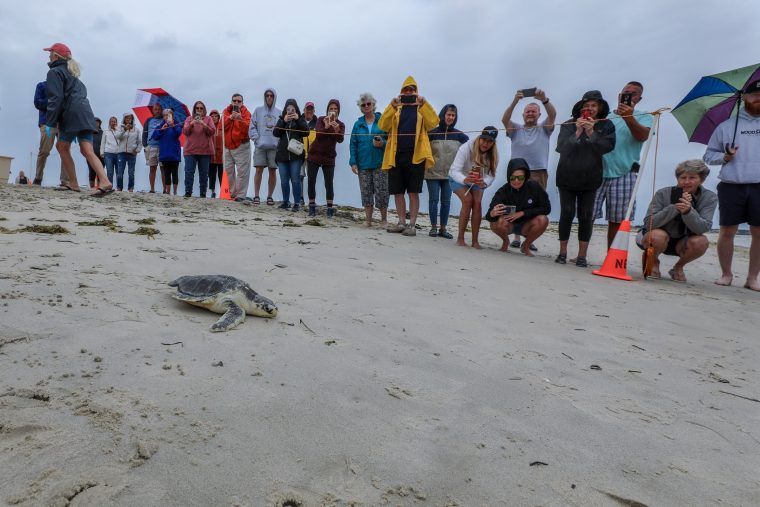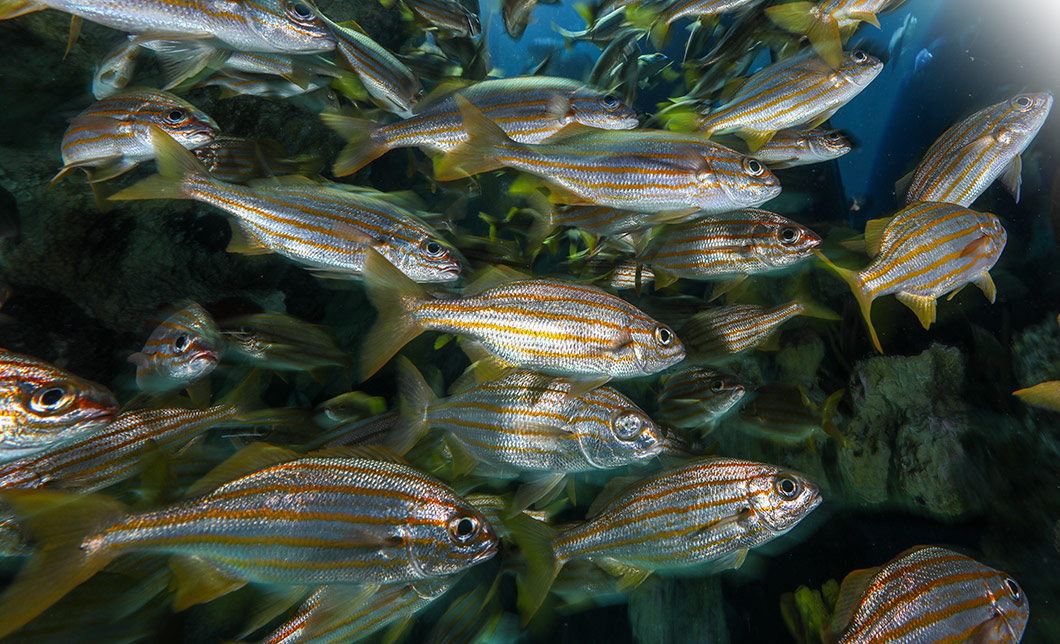We will be closed on Tuesday, April 30, for a day of strategy work and team building.
The New Balance Foundation Marine Mammal Center will be closed for exhibit maintenance on Monday, April 29 and Wednesday, May 1.
Loggerhead turtle “Himalayan Salt” outfitted with tracking tag

BOSTON, MASS. (Sept. 6, 2022) – In the New England Aquarium’s final local release of the summer, two rehabilitated sea turtles—”Himalayan Salt,” a loggerhead, and “Turmeric,” a Kemp’s ridley—made their way back into the ocean after months of care at the Aquarium’s Sea Turtle Hospital in Quincy, MA.
PHOTOS AND VIDEO AVAILABLE HERE, WITH CREDIT TO NEW ENGLAND AQUARIUM
A small crowd of Aquarium staffers, volunteers, and supporters gathered to return the turtles to the ocean waters off Cape Cod on Tuesday. Staff and volunteers with Mass Audubon’s Wellfleet Bay Wildlife Sanctuary rescued the two turtles after they washed ashore cold-stunned on Cape Cod this past December 2021. Himalayan Salt was admitted to the Aquarium’s Sea Turtle Hospital on Christmas Eve and received antibiotics for almost a month and a half to treat progressive pulmonary changes. The Aquarium equipped the loggerhead with an external satellite tag designed to allow staff to track and monitor the turtle’s movements.
For Turmeric, the journey to recovery was a little more complicated as a result of fractures to the turtle’s shell, right femur, and tibia in addition to pneumonia. Turmeric was initially admitted to National Marine Life Center in Bourne, Mass., and was transferred to the Aquarium’s Quincy facility once there were concerns about the turtle’s lungs being exposed by the fractured shell. After determining the lungs were not in a compromised situation, Turmeric underwent surgery to explore and repair the femoral and tibial fractures in the right rear flipper. Pins and a plate were used to secure the fractures, but following two and a half months of attempted healing and still minimal to no use of the flipper, it was amputated. After receiving laser therapy for almost two months, antibiotics, and wound care, Turmeric was deemed healthy enough to return to the ocean.
“We had the opportunity to help this turtle survive but also learned a lot in the process that can help us with similar cases in the future,” said Adam Kennedy, Director of Rescue and Rehabilitation at the Aquarium. “The Aquarium operates one of the largest sea turtle rescue and rehabilitation programs in the world, and we can still learn and grow in ways that make a stronger team to provide the best care.”
For more than 30 years, the Aquarium has helped rescue, rehabilitate, release, and research endangered and threatened sea turtles. This past turtle stranding season, the Aquarium admitted more than 500 turtles for medical care, working closely with Mass Audubon’s Wellfleet Bay Wildlife Sanctuary, National Marine Life Center, the National Oceanic and Atmospheric Administration’s (NOAA) Fisheries Service, and Turtles Fly Too to save the animals and transfer many to partner organizations to continue rehabilitation.
These two turtles marked the final release of the season for the New England Aquarium.
MEDIA CONTACT:
Pam Bechtold Snyder – psnyder@neaq.org, 617-686-5068

